
The 25th James Bond movie No Time To Die, starring Daniel Craig, may have come and gone. However, the mythology and appeal of 007 endures.
To celebrate the franchise's 60th anniversary, we're thrilled to be bringing back every James Bond movie in order to selected Cineworld cinemas nationwide.
So, grab a martini, dust down that suit jacket and join us as we recap all of the James Bond movies in order of release, from Dr No to No Time To Die. Today's film: You Only Live Twice...
What is the story of You Only Live Twice?
British Mi6 agent James Bond/007 (Sean Connery) is forced to fake his own death, so he can carry out his latest mission incognito. He travels to Japan in search of a missing US and Soviet spacecraft, teaming up with his Japanese counterparts Tiger Tanaka (Tetsuro Tamba) and Aki (Akiko Wakabayashi).
With Eastern and Western superpowers on the brink of war, Bond discovers that the plot is being perpetuated by SPECTRE (Special Executive for Counter-Intelligence, Terrorism, Revenge and Extortion). Its mysterious leader Blofeld (Donald Pleasance) is operating from a base hidden within a hollowed-out volcano and aims to initiate World War III. Bond must use all his initiative and cunning to stop Blofeld in his tracks.
How did You Only Live Twice get made?
If Beatle-mania defined 1960s musical culture, then Bond-mania defined the world of movies. The first four entries in the James Bond franchise, starting with 1962's Dr No, redefined escapist big screen entertainment, deploying exotic locations, action set-pieces, beautiful women and Sean Connery's charismatic central performance to explosively entertaining effect.
Each film was the subject of an extensive marketing campaign, and there were box office results to match. In 1965, Thunderball became the most successful film in the series so far – adjusted for inflation, to date it remains the second most successful Bond movie of all time, behind 2012's Skyfall.
However, the escalating success of the series had come at a price. Actor Connery had become increasingly jaded with the role, resenting the press intrusion and the sheer amount of time he needed to devote to each film. The franchise had also become untethered from its (relatively) grounded Ian Fleming origins, careering into a cartoonish world of gadgets, elaborate set-pieces and puns.
If anything, the sense of ludicrousness ramped up in fifth movie, You Only Live Twice. Producers Albert R. Broccoli and Harry Saltzman had intended to make On Her Majesty's Secret Service but this was delayed owing to the need for mountain-based, snowy locations. American screenwriter Harold Jack Bloom was originally enlisted to write the script, but when his work was turned down, oddly enough, the job fell to revered children's author Roald Dahl. (Regular Bond screenwriter Richard Maibaum was unavailable.)
Dahl was chosen because he was a close friend of late Bond author Fleming (who had died in 1964, just prior to the release of Goldfinger). However, he was derisory of the original story of You Only Live Twice, describing it as "Fleming's worst book, with no plot in it which would even make a movie". Junking most of what he perceived as a "travelogue" story, Dahl instead envisaged a far-fetched scenario that capitalised on the 1960s space race boom, filled with rocket ships and rocket ship-eating spacecraft.
Although established by this stage as an author, Dahl was relatively inexperienced as a screenwriter. He stated that he had to create a new plot "[though] I could retain only four or five of the original story's ideas". Admitting that he had "no idea what the hell Bond was going to do" in the movie, Dahl turned in his first draft in six weeks. It's perhaps unsurprising that, in its finished form, You Only Live Twice plays like a series of increasingly elaborate set-pieces, with only the flimsiest trace element of international espionage tying everything together.
Broccoli and Saltzman chose Lewis Gilbert to direct the movie. (Gilbert had directed World War II movie Sink the Bismarck! and would later go on to make films such as Alfie and Educating Rita.) This would be the first of Gilbert's three Bond films, the others being Roger Moore movies The Spy Who Loved Me (1977) and Moonraker (1979).
The decision is said to have angered regular Bond editor Peter R. Hunt, who had hoped to direct You Only Live Twice. Hunt was eventually chosen to direct the second unit photography (the unit responsible for stunts and set-pieces), before later getting his chance to helm On Her Majesty's Secret Service. Hunt is said to have been awarded directing duties on the latter after re-editing You Only Live Twice – the original, three-hour cut by a different editor was disparaged as incoherent and overlong.
Dahl was complimentary of Gilbert's working methods. ""He not only helped in script conferences, but had some good ideas and then left you alone, and when you produced the finished thing, he shot it," Dahl recalled. "Other directors have such an ego that they want to rewrite it and put their own dialogue in, and it's usually disastrous. What I admired so much about Lewis Gilbert was that he just took the screenplay and shot it. That's the way to direct: You either trust your writer or you don't."
You Only Live Twice is unusual for a Bond movie in that it stays within a single country. (This doesn't include the interior locations shot at the UK's Pinewood Studios.) In this case, Japan is where the story plays out – back in the 1960s, the so-called 'land of the rising sun' was as exotic as it was possible to get, and the country's blend of neon-flecked streets and staggering, volcano-dotted vistas helped accentuate the feel of adventurous bravado.
Gilbert, producers Broccoli and Harry Saltzman, production designer Ken Adam and director of photography Freddie Young (celebrated for his work on David Lean's Lawrence of Arabia) then went to Japan, spending three weeks searching for locations. SPECTRE's shore fortress headquarters was changed to an extinct volcano after the team learned that the Japanese do not build castles by the sea.
Toho Studios, famed for the Godzilla franchise, provided many of the Japanese actresses for the production, not to mention key sound stages and personnel. Actor Tetsuro Tambo was chosen because Gilbert had worked with him on 1864 drama The 7th Dawn, set and filmed in Malaysia.
Akiko Wakabayashi, who plays Japanese agent Aki, had initially been cast in the role of Kissy Suzuki, eventually taken by Mie Hama. However, Hama's struggles with the English language meant the roles were switched around, so she would have less dialogue to contend with. (Hama was body-doubled in certain shots by Connery's then-wife Diane Cilento.)
The role of Kissy Suzuki was derived from Fleming's book; however, Aki and the treacherous femme fatale Helga Brandt (Karin Dor) were created by Dahl to fufil a 'three Bond women' rule mandated by the producers. The casting of the nefarious Blofeld, however, proved tricky. Czech actor and playwright Jan Werich was initially cast, but later dropped from the movie after the filmmakers complained that he wasn't menacing enough.
The role eventually went to The Great Escape actor Donald Pleasance, who with his softly spoken voice, bald head, scar and white cat went on to become one of the most parodied villains of all time. Although Pleasance doesn't appear until the final third of the movie, his understated sense of menace creates a lasting impression. (Some of the distance shots of Blofeld, unseen, in his chair were retained from Werich's footage – look closely and you can see the character has grown hair.)
Ridiculous as You Only Live Twice is, the movie features some of the most breathtaking location work in the series. Hilltop castle Himeji, a feudal structure located within the Hyogo Prefecture on the island of Honshu, acts as the stunning backdrop to the ninja training sequence. This is where Bond gains valuable allies in the final assault on Blofeld's top-secret volcano layer.
Interestingly, the fight scene between Bond and a heavily-built goon, won by means of a heavy stone statue, marks an early film appearance from Dwayne Johnson's grandfather, Peter Maivia. He was a Samoan-American professional wrestler, and lends gritty conviction to one of the better Connery fight scenes.
Location filming spanned Japan, including Toyko, the shinto shrine at Nachi, Kobe Docks and the quaint seaside fishing village of Bonotsucho Akime. The extended wedding scene between Bond and Kissy, where 007 ludicrously becomes Japanese by way of a toupee, was taken straight from Fleming's novel. Kobe Docks also makes a memorable appearance during a rooftop fight sequence that's shot from the air.
However, the scenes involving Bond's gyrocopter Little Nellie, which he uses to scout the volcano housing Blofeld, were difficult to capture. The craft was invented by RAF Wing Commander Ken Wallis, and adorned with gadgets by special effects supervisor John Stears (who had won an Oscar for Thunderball).
But owing to tricky downdraft conditions in Japan (which resulted in a cameraman's foot being severed), the shots were ultimately spliced together from two different locations. The scenes involving pyrotechnics weren't permitted by the Japanese authorities, so were conducted at Torremolinos in Spain. The more placid shots of the volcano itself depict Mount Shinmoe-dake in Kyushu.
Of course, any discussion of You Only Live Twice inevitably leads to Ken Adam's remarkable production design. The hidden volcano lair is arguably among Adam's three greatest achievements in the series, the others being the interior of Fort Knox in Goldfinger, and the interior of the submarine-devouring Liparus tanker in The Spy Who Loved Me.
The sheer breadth and imagination of Adam's SPECTRE hideout demonstrated what the Pinewood film stage could do, and helped cement the location as pivotal to the Bond mythology. Built at a then astronomical cost of $1 million, complete with working monorail, the set was a remarkable technical achievement. It was also the subject of a rather snarky BBC report, in which the presenter openly disparaged the production's extravagant expense.
For better or worse, Adam's flights of fancy were increasingly indicative of the direction in which Bond was headed. As the world adjusted to newfangled technological advances, and sought new horizons (man would land on the moon just two years later), the Bond franchise itself had to flex and adjust.
However, it wasn't enough for Connery, who had been mobbed relentlessly by fans while on location in Japan. Although he was synonymous with the role on the big screen, he eventually had enough and made You Only Live Twice his final Bond movie. (That is, until Broccoli and Saltzman lured him back with an astronomical paycheck for 1971's Diamonds are Forever.)
Broccoli later told journalist and travel correspondent Alan Whicker: "It won't be the last Bond under any circumstances—with all due respect to Sean, who I think has been certainly the best man to play this part. We will, in our own way, try to continue the Bond series for the audience because it's too important".
The search for a new James Bond actor was officially on...
READ MORE
- No Time To Die and the 6 James Bond movies we never got to see
- 7 actors who could play James Bond after Daniel Craig retires
- Shaken and stirred! Daniel Craig's defining 007 moments
What music is on the You Only Live Twice soundtrack?
You Only Live Twice was the fourth Bond score by composer John Barry, and features some of his lushest, most beautiful work from the series. By 1967, Barry had emerged from the legacy of his trio the John Barry Seven, not just established as the official musical voice as Bond, but also an Oscar-winning composer in his own right. (The year previously, he won his first Academy Award for the breathtaking Born Free score.)
Barry's increasingly romantic and melodramatic impulses adorn the music for You Only Live Twice. The composer's sensitive touch adds to the mystique and beauty of Japan, beginning with the title song, performed by Frank Sinatra's daughter, Nancy. However, the recording of the song was difficult: a nervous Sinatra kept fluffing her lines, forcing Barry to compile the finished result from multiple takes. (This was later sampled by Robbie Williams for 'Millennium'.)
As with all his Bond scores, Barry remains steadfastly loyal to the melody established in the song. You Only Live Twice places harmonious emphasis on smooth strings and subtle Japanese embellishments like the koto, gong and woodblock to reflect Bond's environment. This is most apparent in the enchanting 'The Wedding' track, one of the most delicate and attractive pieces ever composed by Barry.
Not only weaving in the traditional Bond theme (which Barry had arranged, although it was composed by Monty Norman), the composer also reinstates the boisterous '007 theme'. This secondary action piece had already been heard on and off during the preceding Connery movies, and this time it soars into life as 007 enjoys his debut flight in Little Nellie.
Barry was also superbly talented at assimilating the musical stylistics of a particular period. In this case, he adopts a pop/rock aesthetic during certain action sequences, including the electric guitar-laden 'Fight At Kobe Dock'. (This works wonderfully when seen in conjunction with the scene's aerial shot, as Bond lays waste to all the bad guys.)
During the tension-laden moments, Barry deploys his signature marches that seem laden with doom and peril. The famous 'Capsule in Space' piece, embodying the unstoppable force of Blofeld's rocket technology, was later cited by Bond composer David Arnold as one of his favourite tracks from the series.
How was You Only Live Twice received?
To promote the film, Eon Productions produced a one-hour colour television program called 'Welcome to Japan, Mr. Bond', which first aired on American channel NBC on the 2nd of June 1967. You Only Live Twice premiered in Leicester Square – the first Bond premiere attended by Queen Elizabeth II.
The movie grossed $111 million worldwide against a $10 million budget – a success, certainly, but less than the gross of predecessor Thunderball. It may have been a sign that Bond fatigue was setting in, and this feeling was certainly mirrored in some of the reviews.
Film critic Roger Ebert said the film "fails to work its magic". Meanwhile, fellow critic James Berardinelli said that the first half was good, but "during the second half, as the plot escalates beyond the bounds of preposterousness, that the film starts to fragment", adding that the "rockets that swallow up spacecraft are a bit too extravagant".
For all its faults, You Only Live Twice was the end of an era: the culmination of the Sean Connery Bond run (barring Diamonds are Forever), and a clear harbinger of the increasingly excessive direction the series would take.
What was the next movie in the James Bond series?
On Her Majesty's Secret Service was the next Bond movie, released in 1969.
Don't forget to tweet us your favourite James Bond movies @Cineworld.


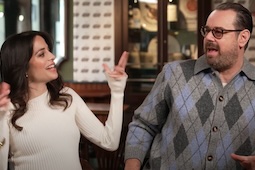

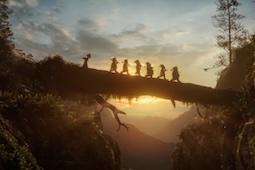

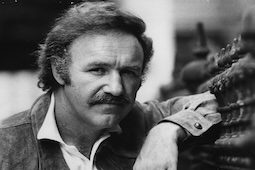

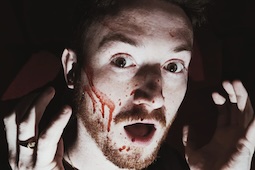
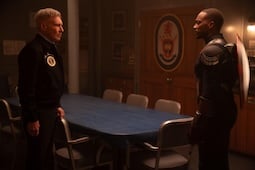
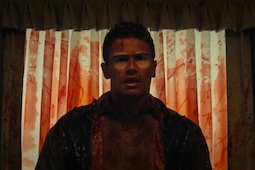




.jpg)
.png)






